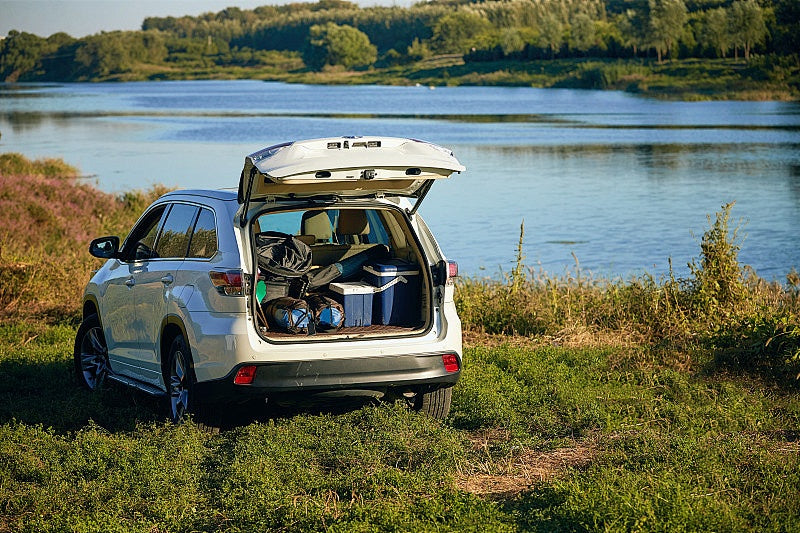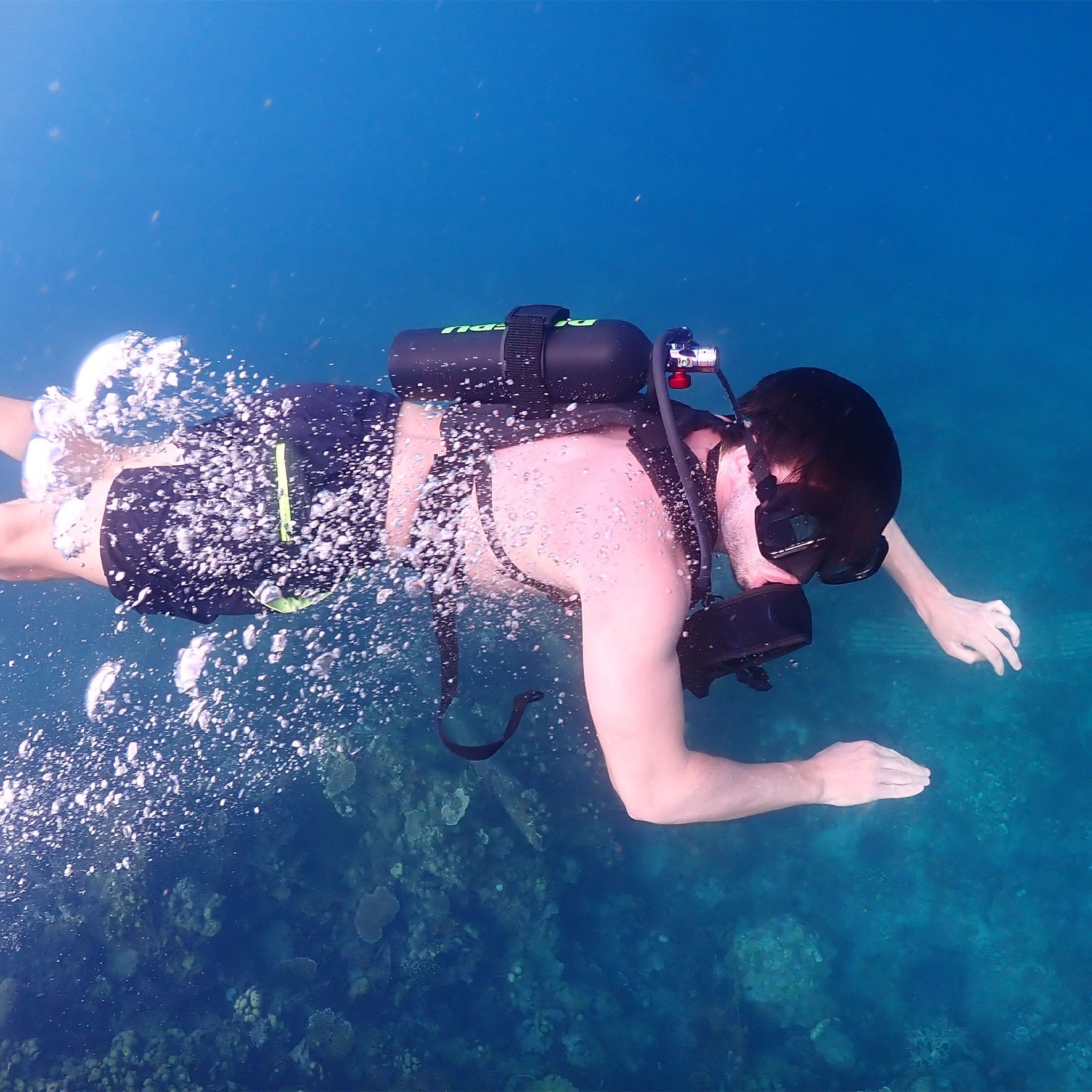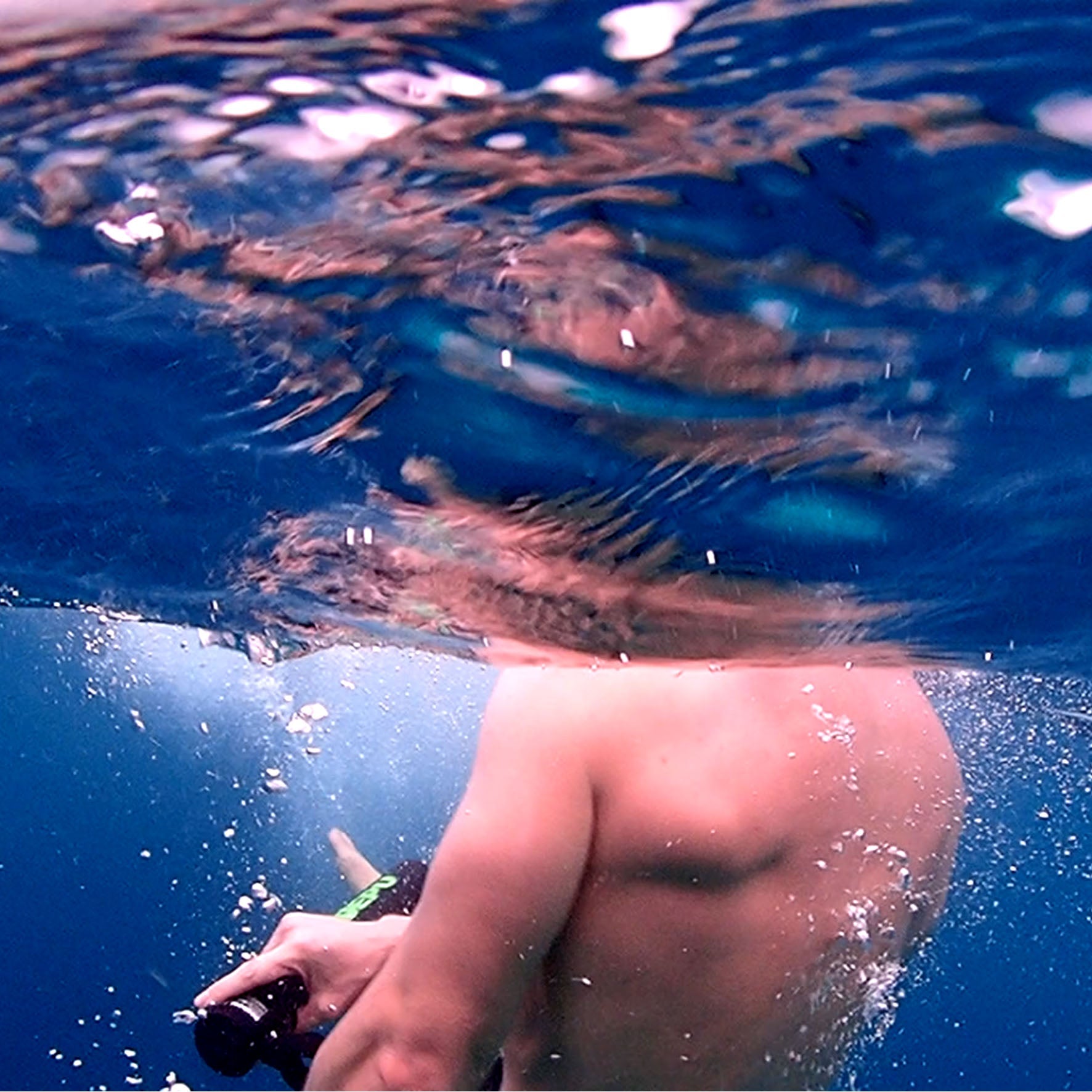High temperatures cause the air inside to expand, increasing pressure by about 5-10 psi for every 10°F (5.5°C) rise. This can weaken valves or seals over time. If stored in direct sunlight, a car’s interior can reach 120-150°F (49-66°C)—far beyond the recommended storage limit of 120°F (49°C). For short trips, keep tanks in the shade, upright, and secured to prevent rolling. For long-term storage, a cool, dry place below 80°F (27°C) is best. Always crack the valve open slightly if leaving tanks in a hot car to prevent pressure buildup.
How Heat Affects Air Pressure Inside the Tank
For every 10°F (5.5°C) increase in temperature, the pressure inside a sealed scuba tank rises by about 5-10 psi. If you leave a fully pressurized tank (3000 psi) in a car that heats up to 120°F (49°C)—a common interior temperature on a sunny day—the pressure can spike by 50-100 psi. While tanks are tested to handle up to 5,000+ psi, repeated heat exposure weakens metal fatigue resistance over time.
Most manufacturers recommend never storing tanks above 120°F (49°C) for extended periods, as prolonged heat can degrade rubber O-rings and valve seals. A study by the Divers Alert Network (DAN) found that tanks left in hot cars for 6+ hours per day showed a 15% higher failure rate in hydrostatic testing after 5 years compared to those stored in climate-controlled spaces.
Pressure Increase: +5-10 psi per 10°F (5.5°C) rise (Ideal gas law: P₁/T₁ = P₂/T₂)
Car Interior Temp: 120-150°F (49-66°C) in direct sun (vs. 80°F/27°C max recommended storage temp)
Tank Safety Margin: Standard 3,000 psi tank has a burst disc rated at ~5,000 psi, but heat cycling accelerates wear
Seal Degradation: O-rings lose 20-30% elasticity after 200+ hours at 120°F+
Hydro Test Impact: 15% more failures in tanks stored in hot cars vs. cool storage (DAN study)
Practical Takeaways
Never store tanks in direct sunlight—even a shaded car interior can hit 100°F (38°C) in 30 minutes.
If unavoidable, crack the valve open slightly to prevent pressure buildup (but never store partially full tanks long-term—moisture risk).
Check for heat damage: If the tank feels hot to the touch (over 120°F), let it cool before using.
Best storage: Below 80°F (27°C), 40-60% humidity, upright to prevent moisture pooling.

Possible Valve Leaks from Temperature Changes
When a tank goes from a 70°F (21°C) dive shop to a 130°F (54°C) car trunk, the metal valve body expands 0.002-0.004 inches per inch of length, while the rubber O-rings inside swell unevenly. This mismatch can break seals: DAN reports that 12% of tank failures during inspection are due to heat-induced valve leaks, often from repeated exposure to temperature cycles above 50°F (28°C) in a single day.
The worst offender? Rapid cooling after heat exposure. If a hot tank (e.g., 120°F/49°C) is suddenly cooled by AC or water, condensation forms inside. Over 5-10 cycles, moisture corrodes the valve seat, increasing leak risk by 30-40%. Brass valves fare better (corrosion rate <0.0001 inches/year) than stainless steel (0.0003 inches/year in salty humidity), but neither tolerates neglect.
Thermal Expansion: Valve metal grows ~0.003 inches per 100°F (38°C) rise (aluminum vs. brass rates differ by 8%)
O-Ring Swell: Nitrile rubber seals expand 5-7% volume per 50°F (10°C) increase, but shrink back imperfectly
Leak Threshold: Bubble test failures spike 25% after tanks endure 10+ cycles between 40-120°F (4-49°C)
Condensation Damage: 1-2mL of water per cooling cycle accelerates corrosion; 5mL+ pools at the valve base
Inspection Stats: 12% of failed tanks show heat-related valve leaks (per PSI-PCI 2023 industry report)
How to Prevent Leaks
Avoid Extreme Swings: Don’t move tanks from a hot car to cold water—let them stabilize at room temp (68-77°F/20-25°C) first.
Store Valves Dry: After diving, purge tanks for 2-3 seconds to eject moisture before storage.
Annual O-Ring Checks: Replace every 2 years or after 50 dives—whichever comes first.
Use Silicone Grease: Reduces friction wear by 60% in high-heat cycling tests (apply 0.5g per valve service).
Proper Way to Secure Tanks During Transport
A loose scuba tank in a car isn’t just annoying—it’s a 15-20 lb (7-9 kg) steel or aluminum projectile in a crash. At 30 mph (48 km/h), an unsecured tank can hit with over 500 lbs (227 kg) of force—enough to bend seats or injure passengers. The U.S. DOT reports 3-5 dive-related vehicle accidents annually caused by poorly secured gear.
Tank shape makes things worse: 80% of tanks (standard 7.25" diameter) will roll if tilted over 10 degrees, and 60% of divers admit to just tossing tanks in the trunk. Proper strapping reduces movement risk by 90%, but only if done right.
Key Considerations & Methods
The physics of tank movement during transport is straightforward but often ignored. In a sudden stop at 30 mph (48 km/h), an unsecured tank becomes a dangerous object due to inertia. Tests show that a 20 lb (9 kg) aluminum tank can generate 500 lbs (227 kg) of impact force when unrestrained—enough to crack a car window or dent metal framing. Even in normal driving, tanks experience 0.3-0.5 Gs of lateral force during turns, causing gradual shifting that weakens straps over time.
Use a tank boot or non-slip base – A 0.5" thick rubber boot ($15-30) prevents rolling by increasing surface friction. Tests confirm it reduces movement by 95% compared to bare metal on plastic.
Install two ratchet straps per tank – Each strap should have a minimum 1" width and 500 lb (227 kg) working load limit. Straps should form a 45-60° angle to the tank’s axis—this cuts sideways motion by 50% versus horizontal strapping.
Anchor to structural points – In trunks, attach straps to tiedown hooks or seat brackets, not flimsy trim. SUVs should use foam blocks to fill 80% of empty space around tanks.
Check tension every 30 minutes – Vibration loosens straps 5-10% per hour. A quick pull-test ensures they stay tight.
Common mistakes include relying on bungee cords (which stretch 20-30% and allow excessive movement) or stacking tanks (which multiplies collision forces). Data from dive shops indicates straps fail 3x more often when only one is used, and stacked tanks increase the risk of a domino-effect collision.
For long trips, consider professional transport racks (100-300), which distribute forces evenly and reduce maintenance checks. The cost is justified when compared to 200-500 in interior damage from a single loose tank incident—or worse, injury claims.
Maximum Safe Time for Leaving Tanks in Vehicles
Leaving scuba tanks in vehicles is always a calculated risk. When interior temperatures exceed 100°F (38°C), the pressure inside a standard 80cf aluminum tank increases by approximately 5 psi per hour during the first 3 hours of exposure. Industry testing shows that tanks stored in vehicles at 120°F (49°C) for more than 6 hours per day experience O-ring degradation rates 30% faster than properly stored tanks. The Divers Alert Network recommends never exceeding 4 hours of continuous exposure above 90°F (32°C) for optimal equipment preservation.
Vehicle interior temperatures can skyrocket much faster than most divers realize. On an 85°F (29°C) day, dashboard temperatures reach 160°F (71°C) in just 30 minutes, while trunk spaces hit 125°F (52°C) within 2 hours. These extreme conditions create multiple problems:
Pressure increases follow a predictable curve: +25 psi in the first hour, +15 psi in the second hour, and +5 psi each additional hour until equilibrium
Valve lubrication viscosity decreases by 40% after 4 hours at 110°F (43°C), increasing wear rates
Composite tanks lose structural integrity 50% faster than aluminum when exposed to repeated heat cycles
For short-term storage (under 2 hours), follow these guidelines:
Park in shade with windows cracked at least 2 inches
Place tanks on the floor rather than seats (20°F/11°C temperature difference)
Cover with reflective material to reduce heat absorption by 35%
When unavoidable long-term storage is necessary:
Rotate tanks weekly if stored in a vehicle
Perform visual inspections every 30 days for rust or corrosion
Replace O-rings twice as often (every 12 months instead of 24)
Budget for hydrostatic testing 6 months sooner than normal schedule
The financial impact adds up quickly. Tanks stored improperly in vehicles require:
25% more frequent valve servicing ($50-75 per service)
15% shorter overall lifespan (5-7 years instead of 8-10)
40% higher failure rate during hydrostatic testing ($35-50 per test)
For professional divers who must store gear in vehicles, investing $200-300 in a portable insulated storage box pays for itself in 18-24 months through reduced maintenance costs. These units maintain interior temperatures below 90°F (32°C) for up to 8 hours in 100°F (38°C) ambient conditions.

Ideal Storage Locations When Not in Use
Tanks kept in optimal conditions maintain their integrity for 8-10 years, while those stored poorly may need replacement in just 5-7 years. The sweet spot? A space maintaining 60-70°F (15-21°C) with 40-60% humidity. Data shows tanks stored in garages (where temperatures fluctuate 30-40°F daily) corrode 3x faster than those kept in climate-controlled areas. A 2023 industry study found that proper storage reduces annual maintenance costs by 35-50 per tank - that's 280-500 saved over an 8-year lifespan.
Proper Storage
Temperature stability is crucial. For every 10°F (5.5°C) increase above 80°F (27°C), the rate of internal corrosion doubles. Humidity matters equally - at 70% relative humidity, steel tanks develop surface rust in just 3-6 months versus 2+ years at 50% humidity. Here's how different locations stack up:
Best Options:
Climate-controlled basements: Maintain 65±5°F year-round (ideal for 5+ tank collections)
Interior closets: Stay within 60-75°F range (perfect for 1-2 tanks)
Dive shops: Professional storage runs $5-15/month per tank (worth it for expensive setups)
Acceptable Compromises:
Garages with insulation: Add $200-500 insulation to reduce temperature swings
Outdoor sheds: Require $150 dehumidifier to maintain <60% humidity
Vehicle storage: Only with $300+ insulated boxes (maintains <90°F for 8 hours)
Cost-Benefit Breakdown:
Initial setup: $100-500 for proper storage solutions
Annual savings: $35-50 less in maintenance
Long-term payoff: 3-5 year breakeven point
Added value: 2-3 year extended tank lifespan
Key Maintenance Requirements:
Store vertically to prevent moisture pooling (reduces valve corrosion by 40%)
Keep at least 50% full to minimize internal moisture (empty tanks corrode 25% faster)
Rotate tanks monthly if storing multiple units (prevents "flat spots" on valves)
Wipe down monthly with silicone cloth ($10 each, lasts 6 months)
For professional divers storing 4+ tanks, investing $800-1,200 in a dedicated storage cabinet with:
Temperature control (±2°F accuracy)
Humidity monitoring (digital display)
Secure mounting
pays for itself in 4-6 years through reduced hydrotesting failures alone. The math is simple - one failed hydro test costs 50, while proper storage reduces failure rates from 15% to 5%. For a 10-tank collection, that's 500 saved every 5 years.
Remember: The 20/month you might save by cutting corners on storage will cost you 200+/year in premature replacements and extra maintenance. Quality storage isn't an expense - it's an investment that pays dividends in tank longevity and dive safety.





Leave a comment
All comments are moderated before being published.
This site is protected by hCaptcha and the hCaptcha Privacy Policy and Terms of Service apply.